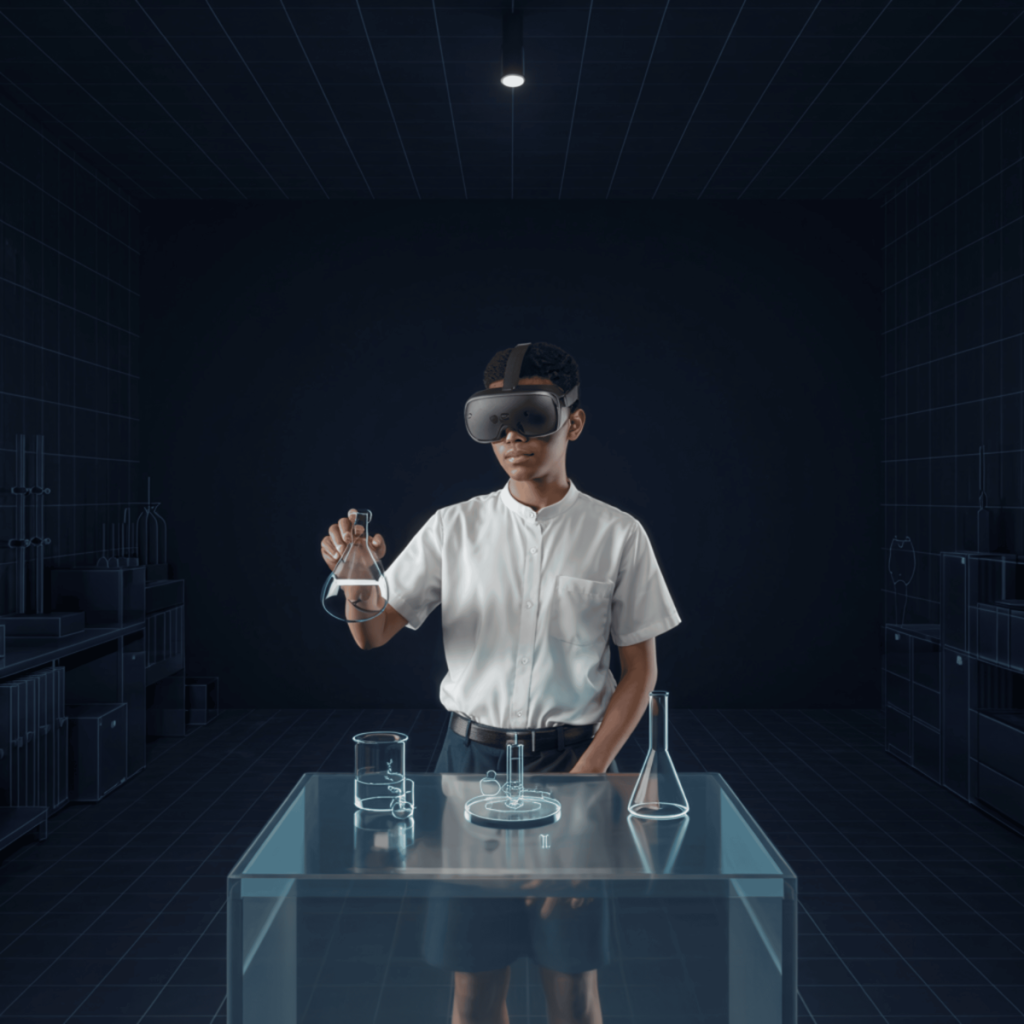Submission 2025
| Submitted by: | Abdulmalik Abbas |
| Department: | Elementary + Secondary Education |
| Faculty: | Education |
This image depicts a secondary-school student immersed in a virtual chemistry laboratory using basic VR goggles. My research investigates how artificial intelligence and affordable VR technologies can alleviate the challenges faced by resource-limited secondary schools, where chemistry education often suffers due to inadequate laboratory facilities. By providing a virtual interactive environment, AI tools offer students opportunities to visualize chemical experiments and concepts clearly and safely, promoting equity, engagement, and enhanced conceptual understanding in secondary school chemistry classrooms.
Was your image created using Generative AI?
Yes.
Did you upload any materials into an AI tool to help generate your image?
No.
If AI was used, which model?
Ideogram.
How did you craft your prompt to guide the generative AI in creating your image?
My goal was to visually express how AI-powered virtual labs can support chemistry learning in resource-limited educational settings. I wanted to convey a sense of quiet focus and possibility through the depiction of a secondary school student immersed in a simplified virtual lab. To guide the AI, I wrote a prompt that included specific descriptors such as “Black secondary student,” “minimalist virtual lab,” “VR goggles,” and “basic digital lab equipment like a beaker and flask.” I emphasized a clean, empty digital space to highlight the learning experience without distractions. I refined the prompt across several generations, adjusting lighting cues, spatial layout, and wording to avoid unrealistic or overly stylized results. I used aspect ratio controls to ensure balance in composition and added negative prompts to exclude floating molecules and text overlays. The process involved critical iteration, with each adjustment bringing the final image closer to the educational message at the core of my research.
Where is the image located?
The image was digitally created using Ideogram and emerges from my research at the University of Alberta exploring how AI-powered virtual labs can support chemistry learning in under-resourced secondary school environments.

